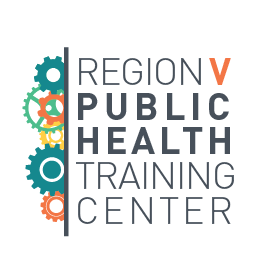By Debbie Edokpolo, MSW, Sr. Director of Health Equity, Michigan Primary Care Association, and Dani Meier, PhD, MSW, MA, Chief Clinical Officer, Mid-State Health Network
In 2020, the coronavirus pandemic highlighted longstanding health disparities for communities of color relative to the general population (CDC, Minority Health). The opioid overdose epidemic in the U.S., however, predated the pandemic. As COVID-19 deaths decline, overdose deaths continue to rise, with death rates spiking in communities of color (AMA, 2023), where fentanyl has entered the drug supply of stimulants as well as heroin.
In Michigan, for example, the most recent 12 months of data reveal that the overdose death rate for Black Michiganders is over 2.5 times greater than the death rate of White Michiganders. In Washtenaw County, home to the University of Michigan’s flagship campus, the death rate is over 3.3 times greater for Black vs. White Washtenaw County residents (MODA Dashboard).
Underlying disparities for populations who are Black, Indigenous & other People of Color (BIPOC) are the same social determinants of health (SDOH) that contribute to other poor health outcomes in communities of color (i.e., structural racism, systemic biases, lower socioeconomic status, toxic stress, interpersonal struggles with adverse life events, and lack of social or emotional support). Additionally, the SDOH contributes to the Social Determinants of Mental Health (SDOMH) with added social stigma associated with substance use disorder (SUD). Combined with pre-existing chronic disorders or genetic risk factors, SDoMH significantly increases the overdose rate for SUD and exacerbates healthcare disparities.
Equally persistent are disparities in quality care received by BIPOC vs. White patients (JNMA, 2002). Overt racism in the medical field diminished in the late 20th century, but as recently as 2016, a survey of unconscious bias among medical students and residents found that 50% of respondents agreed with old stereotypes about biological differences between Black and White patients (PNAS, 2016), among them that Black people have higher pain tolerance and have thicker skin than White people. This has translated into diminished care for patients who are BIPOC, from under-treatment for pain in emergency rooms (NEJM, 2021) to under-medicating even children who have appendicitis (JAMA, 2016).
Today, stemming the tide of overdose deaths relies heavily on Medication for Opioid Use Disorder (MOUD), the evidence-based practice that utilizes buprenorphine, methadone, and naltrexone medications. MOUD saves lives, but multiple studies have identified racial disparities in the prescribing of MOUD, methadone, and buprenorphine in particular (Harvard, 2021). From a public health standpoint, this issue is particularly critical for opioid use disorders (Gondre-Lewis, 2022).
Another significant barrier to effective treatment is the lack of culturally sensitive care. BIPOC patients often find their unique cultural experiences are not understood or respected, which reinforces mistrust in medical providers, increases stigma, reduces engagement in treatment, and results in diminished health outcomes. Culturally sensitive treatment involves understanding and addressing the unique cultural, social, and historical contexts that influence substance misuse and recovery in communities of color.
Addressing the opioid crisis in Black and other communities of color means implementing a multifaceted approach that accounts for the unique challenges and systemic inequities these communities face. This approach should include the following:
- Access to culturally competent treatment and recovery services
- Consideration of historical trauma
- Addressing Social Determinants of Health
- Combating stigma
- Data collection and research informed by an equity lens
- Harm reduction strategies
- Prevention programs
- Policy reform around criminal justice
By addressing these priority areas in the care of BIPOC individuals who struggle with addiction, we can create a more equitable and effective response to the opioid crisis in Black and other communities of color, ultimately leading to better health outcomes and stronger communities.
To learn more, check out these resources:
- Health Equity & Racial Justice in Public Health (Program-No CE)
- The Criminal Justice System and Substance Use Treatment (On Demand-No CE)
- The Impact of Health Inequities on Patients with OUD (On Demand-No CE)

